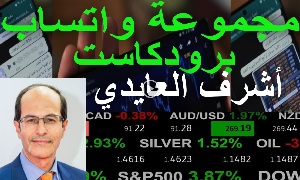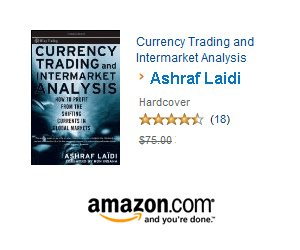Forum > View Topic
by Ashraf Laidi
Posted: Feb 22, 2010 5:00
Comments: 8936
Posted: Feb 22, 2010 5:00
Comments: 8936
Forum Topic:
Gold, Oil & Indices (Equity & Bond Indices)
Discuss Gold, Oil & Indices (Equity & Bond Indices)






todays close below 98 would be a good start.
gl
Here is what I wrote in the latest Premium piece
The International Atomic Energy Agency released a report on Irans nuclear facilities, stating that "Upward price momentum in recent days has centred on the tense situation over Iran's nuclear programme, triggering a $2-3 per barrel rise in oil prices in early November. The IAEA added: Considering this and tightening OECD stocks (inventories), a fundamentals underpinning for stubbornly high prices is clear".
As oil rises and euro falls, we take a look at the price of oil in euros;
Unlike in most cases when EURUSD moves in tandem with oil, nowadays they in reverse due to continued deadlock in Italy & Greece debt and political affairs (hurting EUR) and supply and geopolitical factors (propping oil).
[ OIL/EURUSD vs EURUSD vs SP500 ] chart
The last two occasions we saw such inverse pattern was during Irish/Portuguese debt woes in Oct-Nov 2010 (circled by 2) and Greek debt worries in March-April 2010(circled by 1). In each of those cases, overall fundamentals were generally robust, as seen in rising stocks (S&P500 in bottom chart) and rallying oil.
http://ashraflaidi.com/products/sub01/access/?a=548
Ashraf
By Javier Blas in London
The war of words between Washington and Iran about Tehrans nuclear programme is boosting oil prices. The worry? That Israel launches a surprise attack and Iran retaliates shutting down the Strait of Hormuz, the gateway for Middle East oil.
While some say that the market is overreacting as importing countries would tap their strategic reserves to make up for any disruption, a close look at the problem shows that reserves in China and India remain low.
Western countries have the capacity to respond. The Paris-based International Energy Agency can offset, even briefly, the most extreme disruption tapping its strategic petroleum reserves. If drawn down at the maximum drawdown rate technically possible in each of the IEA member countries, the organisation can deliver an average of 10.4m barrels a day of crude oil and an additional 4m b/d of refined products in the first month.
If the disruption lasts in the medium term, it can deliver 4m b/d of crude for up to a year.
In comparison, Iran last year exported an average of about 2.6m b/d of crude oil and tankers carrying about 15.5m b/d of crude oil crossed the Strait of Hormuz.
But what about China and India, two of the biggest buyers of Iranian crude? According to statistics by the US Department of Energy, China and India account for one-third of Irans exports. Neither has a robust system of strategic reserves, at least not yet.
Chinas strategic oil reserve plan calls for a depot of 500m barrels, about 100 days of supply. So far the country has a little more than 110m barrels of reserves, and Beijing plans to add another 40m barrels this year and in 2012, although how fast this will happen is unclear. The current size of the reserve only covers a month of supplies. Iran was the third-largest supplier of crude to China last year, after Saudi Arabia and Angola.
India is behind. The country is targeting reserves of about 40m barrels equal to little more than two weeks of supplies by the end of 2012. So far, it has only 9.8m barrels of crude in its reserves, leaving the country badly exposed to a disruption. Iran was the second-largest supplier of crude to India last year, behind Saudi Arabia.
With limited strategic reserves to fill any gap in the event of an Iranian-triggered supply disruption, China and India could and most likely, will panic, moving to hoard oil.
Philip Verleger, an independent oil economist, has documented the problem in a report entitled Is the World Prepared for a Disruption of Iranian Production?, the best account so far of the oil price and economic implications of rising tension in the Middle East. Mr Verleger warns that China and India are both big buyers of Iranian oil and not members of the IEA, and that the elimination of Iranian exports to China and India could ignite a bidding war for oil similar to that witnessed in the late 1970s after the Shahs collapse.